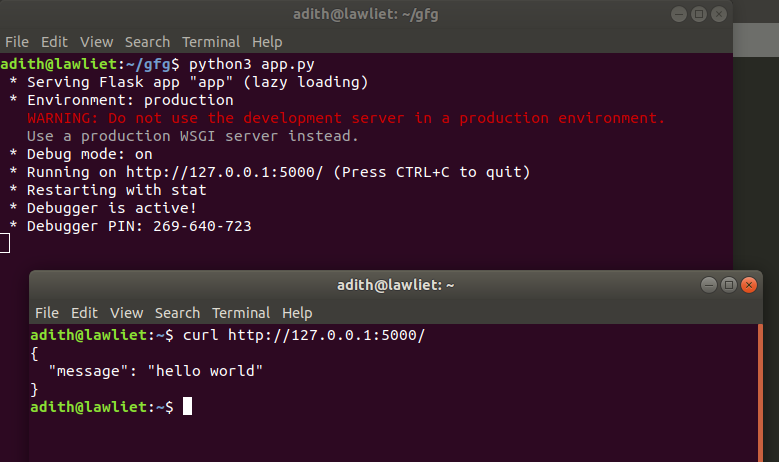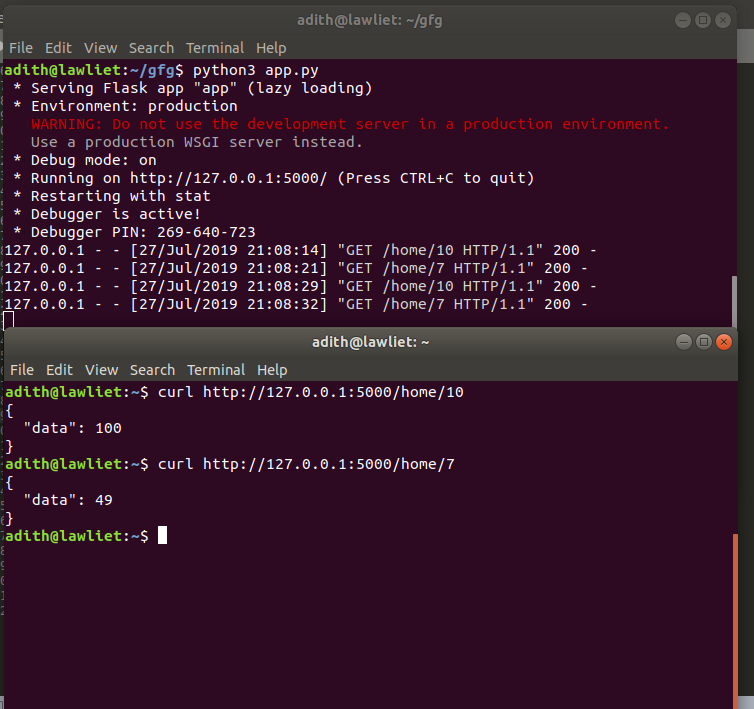Python | Build a REST API using Flask
Last Updated :
25 Feb, 2022
Prerequisite: Introduction to Rest API
REST stands for REpresentational State Transfer and is an architectural style used in modern web development. It defines a set or rules/constraints for a web application to send and receive data.
In this article, we will build a REST API in Python using the Flask framework. Flask is a popular micro framework for building web applications. Since it is a micro-framework, it is very easy to use and lacks most of the advanced functionality which is found in a full-fledged framework. Therefore, building a REST API in Flask is very simple.
There are two ways of creating a REST API in Flask:
- Using Flask without any external libraries
- Using flask_restful library
Libraries required:
flask_restful can be installed via the pip command:
sudo pip3 install flask-restful
Method 1: using only Flask
Here, there are two functions: One function to just return or print the data sent through GET or POST and another function to calculate the square of a number sent through GET request and print it.
from flask import Flask, jsonify, request
app = Flask(__name__)
@app.route('/', methods = ['GET', 'POST'])
def home():
if(request.method == 'GET'):
data = "hello world"
return jsonify({'data': data})
@app.route('/home/<int:num>', methods = ['GET'])
def disp(num):
return jsonify({'data': num**2})
if __name__ == '__main__':
app.run(debug = True)
|
Output:

Executing the square function:

Method 2: Using flask-restful
Flask Restful is an extension for Flask that adds support for building REST APIs in Python using Flask as the back-end. It encourages best practices and is very easy to set up. Flask restful is very easy to pick up if you’re already familiar with flask.
In flask_restful, the main building block is a resource. Each resource can have several methods associated with it such as GET, POST, PUT, DELETE, etc. for example, there could be a resource that calculates the square of a number whenever a get request is sent to it. Each resource is a class that inherits from the Resource class of flask_restful. Once the resource is created and defined, we can add our custom resource to the api and specify a URL path for that corresponding resource.
from flask import Flask, jsonify, request
from flask_restful import Resource, Api
app = Flask(__name__)
api = Api(app)
class Hello(Resource):
def get(self):
return jsonify({'message': 'hello world'})
def post(self):
data = request.get_json()
return jsonify({'data': data}), 201
class Square(Resource):
def get(self, num):
return jsonify({'square': num**2})
api.add_resource(Hello, '/')
api.add_resource(Square, '/square/<int:num>')
if __name__ == '__main__':
app.run(debug = True)
|
Output:

Like Article
Suggest improvement
Share your thoughts in the comments
Please Login to comment...